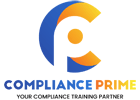Successfully managing a rental property requires careful planning and execution. It is not simply a matter of collecting rent and responding to maintenance requests, but rather a holistic approach that encompasses various key steps.
We will discuss rental property management in this article, including the key responsibilities of rental property managers and six important steps for successful rental property management.



What does a community association manager do?
Community associations play a pivotal role in maintaining harmony within residential neighborhoods and building strong and inclusive housing communities. At the heart of these associations are dedicated Community Association Managers (CAMs) who shoulder significant responsibilities. From maintaining common areas to handling financial matters, CAMs are instrumental in fostering a sense of community and ensuring the smooth functioning of these residential enclaves.
In this blog, we will delve into the five crucial duties that should never be overlooked by a Community Association Manager.
Important Duties of Community Association Managers
- Financial Management
At the nucleus of every thriving community association is sound financial management. CAMs bear the responsibility of creating and managing budgets that sustain the association’s operations.
This involves meticulously outlining anticipated expenses, allocating funds for maintenance, repairs, and improvements, and effectively collecting dues from homeowners. Furthermore, CAMs collaborate with financial professionals to ensure the association’s financial health remains robust.
Managers should be clear and transparent in financial reporting to the board and residents as this helps in ensuring trust and a sustainable financial future for the community.
- Maintenance and Repairs
Aesthetic appeal and functionality go hand in hand when it comes to communal spaces and amenities. CAMs wear the hat of maintenance supervisors, conducting regular inspections to identify maintenance needs and overseeing repairs. From coordinating landscaping efforts to managing vendor contracts for pool maintenance or infrastructure repairs, CAMs ensure the community’s shared spaces remain inviting and well-maintained for everyone. This also includes providing reasonable accommodation to disabled persons. This dedication not only elevates the residents’ quality of life but also safeguards property values over time.
- Rule Enforcement
Harmony within a community relies on adhering to established rules and regulations. CAMs serve as diligent enforcers of these guidelines, from architectural standards to addressing noise complaints and pet violations. By consistently and fairly enforcing these rules, CAMs prevent disputes among residents and foster an environment where everyone feels respected and valued. Their role as impartial mediators ensures that conflicts are resolved in a manner that preserves the community’s harmony.
- Communication and Community Building
Effective communication is the cornerstone of community cohesion. Community Association Managers function as the vital bridge between homeowners and the association’s board of directors. They communicate crucial updates, upcoming events, and policy changes to residents, ensuring transparency and engagement. CAMs also play a pivotal role in community building, organizing events that bring neighbors together, fostering connections, and creating a sense of belonging. Through their efforts, CAMs transform houses into vibrant communities.
- Administrative Tasks
The administrative prowess of CAMs is the backbone that upholds the association’s operational efficiency. From maintaining accurate records of financial transactions and resident communications to managing contracts and documents, CAMs keep the administrative engine running smoothly. Their organizational skills and attention to detail ensure that every facet of the association’s functioning remains well-coordinated and streamlined.
Conclusion:
Community Association Managers shoulder a diverse range of responsibilities that form the bedrock of harmonious residential neighborhoods. By fulfilling their duties of financial management, maintenance oversight, rule enforcement, communication facilitation, and administrative prowess, CAMs create environments where residents thrive and property values are appreciated. Acknowledging and appreciating the significance of these five core duties allows us to recognize the pivotal role CAMs play in nurturing strong, connected, and vibrant communities. For more information explore our more blogs and check the website of Compliance Prime.




